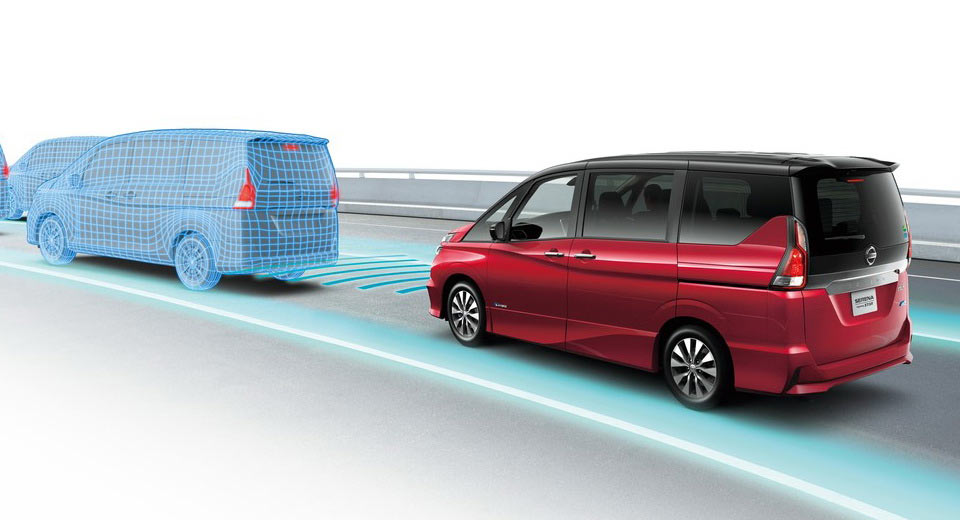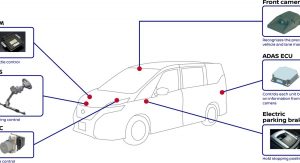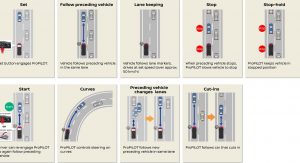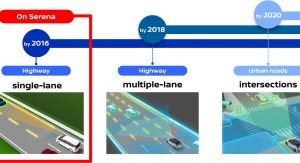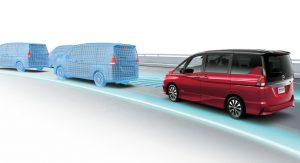After announcing their new Serena minivan, scheduled to go on sale in Japan at the end of next month, Nissan have also released detailed information about their ProPILOT autonomous technology.
While it was designed only for single-lane highway use, the complexities of the technology itself allow Nissan to call themselves the first Japanese automaker to introduce such a combination of fully-automatic steering, acceleration and braking.
By using advanced image-processing technology, the Serena’s ProPILOT system is able to execute precise steering inputs by basically understanding road and traffic situations.
The way in which ProPILOT “sees” is through a mono camera able to recognize three-dimensional depth. Once activated, the system controls the distance between the vehicle and the preceding car, using a speed preset by the driver (between 30 km/h/19 mph and 100 km/h/62 mph). It’s also capable of keeping the car smack down in the middle of its highway lane by reading lane markers and even controlling steering, regardless of whether or not the road is straight.
Similar to other autonomous systems, ProPILOT will also apply the brake to bring the vehicle to a full stop, where the car will remain even if the driver’s foot isn’t on the brake pedal.
Nissan developed the Serena’s ProPILOT system while looking for an easy-to-use technology for highway conditions in Japan. The system will be introduced in several other models, including the Qashqai in Europe in 2017, followed by US and Chinese market launches.
As for further developing the technology, the next step will be to introduce a multi-lane autonomous driving system in 2018, enabling automatic lane changes on highways. Autonomous driving on urban roads/intersections however, won’t arrive until the year 2020.



